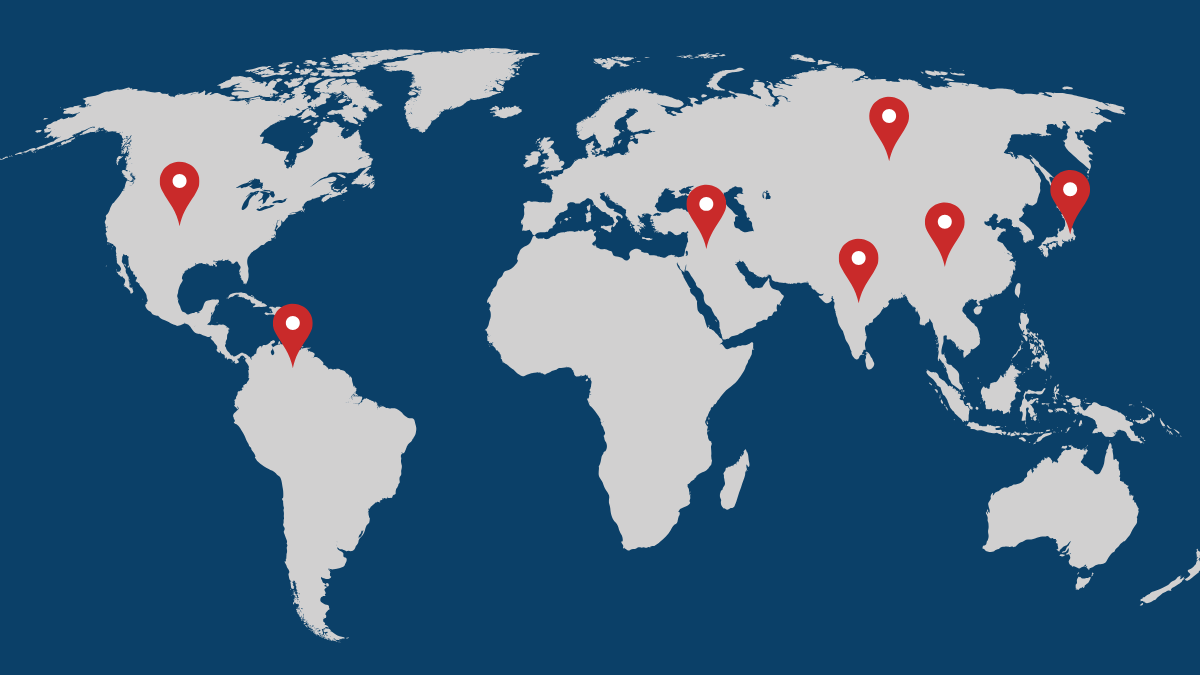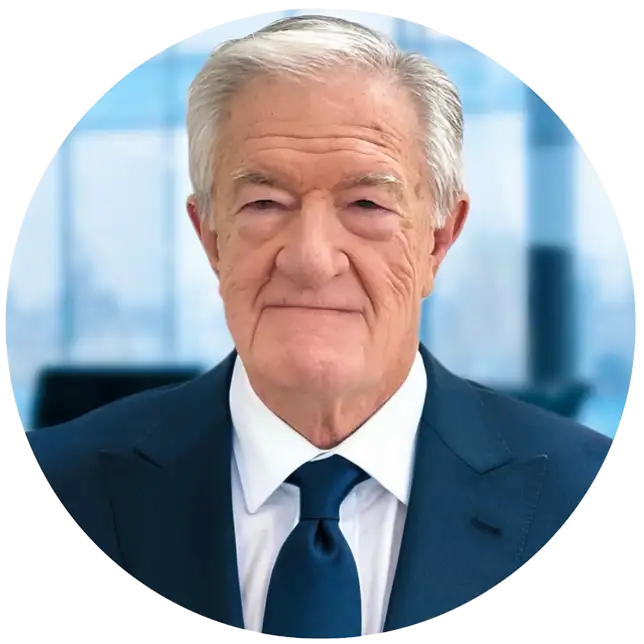
Dear Friends,
The divide between economic and political deals is narrowing, and with it comes a host of tensions and opportunities. The trade war between China and the United States is heating up again, threatening supply chains and striking market fears, but the volatility is both derived from political tensions and forming new ones. The Chinese don’t like playing second fiddle to Washington in the Middle East or Europe, and they’re looking for indirect ways to maintain influence everywhere from Cambodia to Saudi Arabia. Likewise, Russia isn’t ready to step out of the Middle East just yet and is happy to play an indirect role in Syria’s defense if it means maintaining its military bases and energy influence. On the Hamas-Israel front, a fragile but meaningful ceasefire is in place and everyone in the region is now scrambling for a strong position given the evolving reconfiguration of power. And while that war is hopefully winding down, I also can’t neglect to mention what’s happening south of our own border, where Washington has reportedly approved “covert” action in Venezuela and hinted at land strikes on narcotrafficking targets there. There’s a great deal to discuss amid the economics-meets-politics power play, drop me a line.
Kind Regards,
Jack Devine
CIA Spymaster & Chairman, TAG Intel
Emerging World (Dis)Order
Washington and Beijing are renewing their trade war once again, tackling political and economic grievances with a mix of political and economic weapons. This week, the United States unleashed new financial weapons against China, including imposing tariffs and fees on Chinese vessels docking at US ports and Chinese-made machinery, and the Chinese quickly issued retaliatory fees and doubled down with tighter export controls on rare earth minerals and related products coming out of China. While the latest upheaval isn’t entirely unexpected, it underscores how quickly a fragile trade détente can unravel when faced with evolving economic and political pressures.
Even though the crux of the chaos is economic, Beijing’s leadership was upset by its exclusion from last week’s Gaza summit, sidelining Chinese diplomatic efforts in the Middle East. While Xi gained some regional clout by cutting a deal between Saudi Arabia and Iran back in 2023, this pales in comparison to the Gaza ceasefire alliance that President Trump just drummed up with eight Arab and Muslim-majority nations. Chinese media outlets are attempting to downplay the role of American power here, but the world recognizes the accomplishment for what it is, and Xi looks weaker by consequence.
It’s also bad timing because the Chinese Communist Party’s Fourth Plenum begins this week and President Xi is expected to outline the country’s development agenda for 2026–2030. Among stating his global aspirations, he’ll need to account for internal unease—at least eight Central Committee members have been implicated in corruption probes, with six already detained—while also assuring his population that the Chinese economy is on the right track. Projecting strength abroad could be one way to counter these domestic tensions, but right now Xi isn’t the only one in the driver’s seat.
Here at home, I’m also watching a mix of reactions to the latest trade war eruption. The initial tariff threat by President Trump sparked a 2.7% drop in the S&P 500, the index’s biggest one-day fall since April, as investors braced for a return to full-scale trade war. But by Monday, as the President softened his tone, markets had already partially recovered. The rebound seems to demonstrate the hope that escalation can still be avoided, though underlying uncertainty is deepening. The meeting between President Xi and President Trump that’s scheduled for later this month could bring some more clarity here.
Meanwhile, many world economies are caught in the crossfire between the two superpowers, and Asian countries and those in the global south remain the most vulnerable to renewed trade disruption. China has sanctioned subsidiaries of South Korea’s Hanwha Group in retaliation for their work with the US shipbuilding industry, while the EU’s new steel tariffs aimed at Beijing have inadvertently hit British producers. The result is a spreading protectionism everywhere that risks fragmenting global trade.
Both sides may still be leaving room for negotiation, but the latest spat underscores that unpredictability is also a weapon. For Washington, unpredictable trade moves serve as leverage, and for Beijing, regulatory shocks remind the world of its chokehold on key technologies. The consequence is a global economy increasingly driven not by policy coherence, but by strategic disruption — and few countries are immune from the fallout.
Middle East in Flux
US-led negotiations in Egypt successfully delivered a fragile but very meaningful Gaza ceasefire and now the future power dynamics of the Middle East are being renegotiated before our very eyes. It’s hard to understate the shift that’s transpired over the last two years in terms of Iran’s regional reach and positioning, but with the fall of the Assad regime in Syria, Russia’s influence now also hangs in the balance. As President Trump managed to effectively gather a group of eight Arab and Muslim-majority nations together to curb the battle between Israel and Hamas and secure the critical release of the remaining living hostages, Russia and China were watching on the sidelines and they’re trying to figure out how to maintain a foothold in the influential region.
While external powers are busy navigating and trying to secure their new roles, regional players are also trying to figure out how to best use Russia and China to their advantage. This challenge was on display this week when Syrian President Ahmed Al-Sharaa traveled to Moscow to meet with Putin. While Russia supported the Assad regime and upheld its rule of terror for decades, Putin also read the tealeaves and let Assad fall without intervening. It’s likely that he’d already reached out to the opposition that Al-Sharaa was leading even before Assad’s overthrow and laid some of the groundwork to pivot to an amiable relationship with the new Syrian leader.
At the crux of the Russian relationship is energy security, the chance for economic development, and self-defense against regional actors like Iran and Israel—who both have a deep interest in shaping Syria’s future. Syria might look to Putin to act as a buffer between a more aggressive Israel or to talk sense into Iran, but what Syria really wants is Russian expertise in maintaining and developing its energy sector and with it the chance to rebuild the nation. This agreement works nicely for Putin who will likely be permitted to maintain military bases in Syria as a reward for Moscow’s energy know-how.
Meanwhile, China isn’t quite sure what to make of Al-Sharaa and Beijing isn’t happy about Trump’s deep and friendly relations with the Gulf States either. But there are opportunities for Chinese inroads here too, with Saudi Arabia recently signing a defense agreement with Pakistan that brings it one step closer to Chinese nuclear infrastructure. As Saudi Arabia looks to bolster its defenses given the rapidly shifting regional security dynamics, China will likely try to take advantage of the flux and flaunt its own energy and tech offerings to deepen political ties.
While the ceasefire in Gaza and the war that transpired reset the regional map, what comes next will be determined by these side negotiations that will fuse both economic and political aims. We can also expect to see greater presence and influence from Muslim nations like Indonesia and Pakistan, who are already carefully balancing Chinese and US interests at home and offer fertile ground for further dealmaking.
Resource Security, Tech, and Competition
It’s worth highlighting that the reason I pay so much attention to rare earths access and advancements with batteries and nuclear power is because we need this energy to fuel other technological developments like AI and advanced weapons systems. Ultimately, it’s about securing the energy source that grants us energy sovereignty and makes our nation stronger. But as the green energy transition is underway worldwide, we’re all still heavily dependent upon fossil fuels and Russia is supplying them aplenty to customers ranging from China to Turkey—reducing the impact of financial sanctions.
That’s why this week, the Trump administration continued upping pressure on US allies who are still purchasing Russian energy, like Japan. In a meeting between US Treasury Secretary Scott Bessent and Japan’s Finance Minister Katsunobo Kato, Bessent expressed Washington’s expectation for Japan to stop importing Russian gas. This point was mixed into a greater conversation about the future US-Japan trade relationship, which was recently bolstered by a commitment by the Japanese to spend $550 billion in American investments to be chosen by the US government, which was part of a larger deal to limit US tariffs on Japanese imports.
I’ll be watching to see if Washington makes more progress with Japan than it’s made so far with India on the same request. Granted, India and Russia have a longstanding relationship that stretches beyond energy ties, but Indian President Modi still won’t want to fall from Trump’s good graces. On Wednesday, Trump announced that Modi had assured him that he wouldn’t be buying Russian oil, but the spokesman for the Indian foreign ministry rebutted the claim a day later. Modi’s in a tough position where he can’t appear to be surrendering too easily to American pressure but also isn’t protesting the idea as loudly as he did a few months ago.
Like us, and like every nation, India wants to maintain steady and affordable energy to propel forward its technology and defense sectors. And just like Japan, it will need to balance this ambition with the political consequences of purchasing a sanctioned product from a politically fraught source. But in the process of navigating this challenge, its economic and trade strategies will also shift political dynamics and lead to stronger—and weaker—diplomatic partnerships.
Weekly Wildcard
The US war on narcotraffickers is ramping up in Venezuela, but regime change remains a more complicated objective. According to the White House, since September at least five narco-terrorist-linked boats have been destroyed by the US military in the Caribbean, and this week brought another sharp escalation in political tensions between Washington and Venezuela. On Wednesday, President Trump acknowledged that he had authorized the CIA to conduct covert operations inside Venezuela, and multiple US military aircraft were spotted operating near Venezuelan airspace. When asked about the possibility of targeted strikes inside the country, Trump told reporters the administration would “look at it,” but it’s my guess that right now the main target would be drug lords, not politicians.
Thwarting narcoterrorism is an objective that President Trump has stated repeatedly throughout his campaign and presidency, and we should take him at his word on this. Since assuming his second term, Trump has designated certain drug trafficking organizations as Foreign Terrorist Organizations (FTOs) and openly labeled Venezuelan President Nicolás Maduro not just as an illegitimate autocrat, but as the head of a “narco-terrorist” state—one in which the military, intelligence services, and ruling elites are complicit in transnational drug trafficking. It’s possible that Maduro and his government might then be considered legitimate military targets as members of an FTO, but that still doesn’t mean that Trump’s going for regime change through force.
Regime change is always a high-stakes gamble and overthrowing Maduro would require far more than blowing up drug boats in the Caribbean. And yet, the steady drumbeat of pressure is hard to ignore. In recent months, Washington doubled the reward for Maduro’s capture to $50 million, suspended all diplomatic talks, and executed the largest US military deployment to Latin America in decades.
The situation is hot, and the endgame remains murky. But despite the aggressive rhetoric and military build-up, few in Washington appear eager for a full-scale invasion. It also doesn’t make much sense to announce a “covert” action, which indicates that the statement is likely an intimidation tactic as much as an operational strategy. Trump has long positioned himself as a critic of foreign entanglements and likely hopes that threats combined with a show of overwhelming force might crack the foundations of Maduro’s support. In the coming days, I’ll be watching closely to see how the situation evolves. As it stands right now, it’s unclear if and how Maduro will crack under pressure—and exactly how that pressure might be applied.




